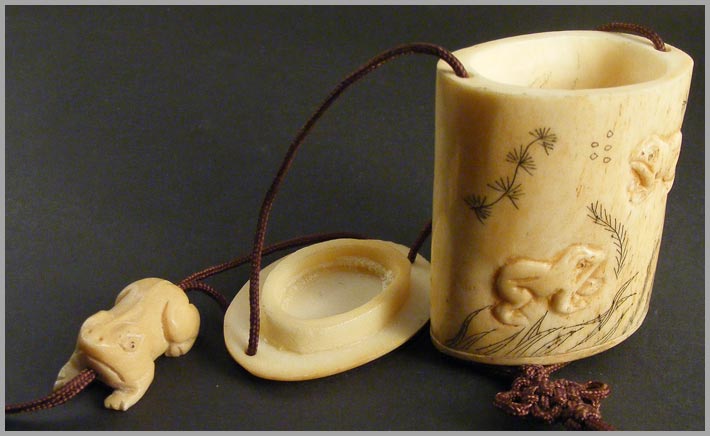The inro was attached to the waist via a cord. On this cord was a bead (an ojime) and a carved figure (a netsuke) that were used as fasteners. This box is decorated with a lobster design.
On the picture below is a superb example and was bought in a charity shop a year ago for 50p. The value is about £3,000-£5,000.
In the 19th Century, Japanese people used to carry small objects, such as seals and medicines, in a small lacquered box known as an inro.
Inro ('seal-basket’) are small decorative containers that hang from the waist. They originated at the end of the sixteenth century and were worn by men to hold seals and herbal and other medicines. They were considered a particularly good way of keeping the contents sealed and fresh. By the eighteenth century they had become decorative accessories and were commissioned by the merchant class, provincial rulers and their samurai, and those that could afford them.
Inro are made from very thin leather, wood or paper covered in decorated lacquer. They consist of separate sections stacked on top of each other, and are kept together by a cord loop that passes through a channel on each side and underneath the bottom section. The sections are held together when the cord is tightened by pulling it through a bead (ojime), rather like the toggles used in outdoor clothing.
The cord is then passed behind the waist sash (obi) so that the inro hangs freely from the waist. To prevent the inro from slipping through the obi, a small and often decorative toggle (netsuke) is attached to the end of the cord.
There is no fixed form of decoration. As with other objects, surfaces are decorated with a variety of subjects: figures were popular, sometimes engaged in the performing arts; monkeys, lions and oxen can also be seen; the changing seasons occur frequently


No comments:
Post a Comment